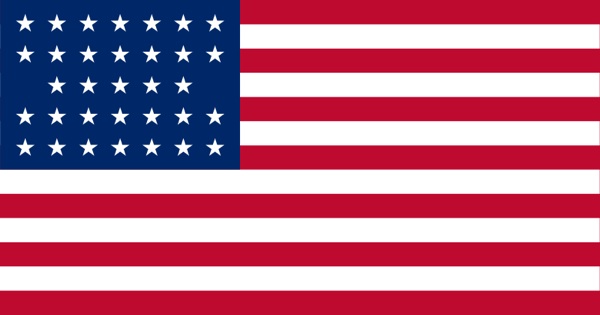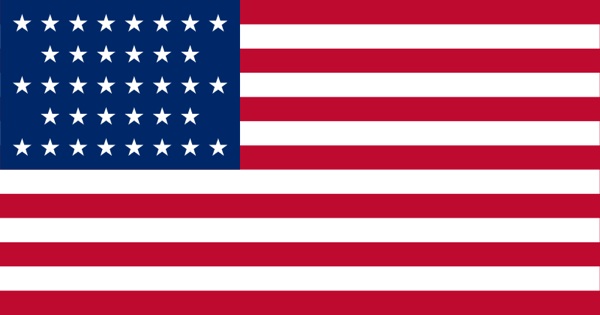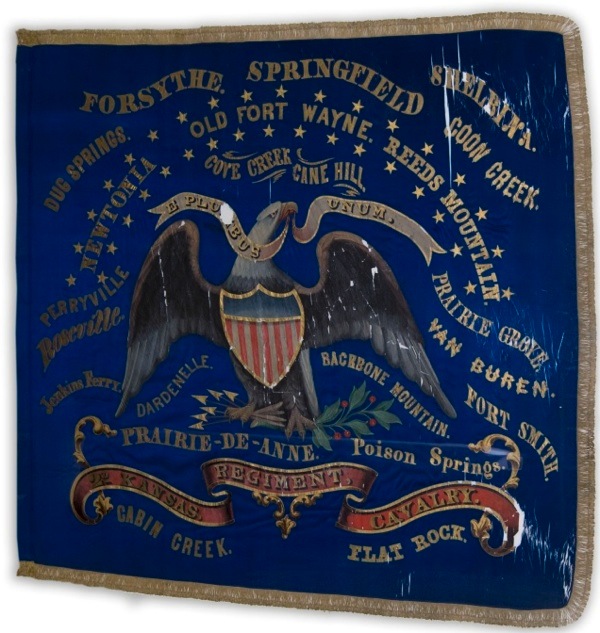Information and Articles About Union Flags, a Civil War Flag from the The American Civil War
The United States flag—the red, white and blue standard—flying above ranks of blue-clad troops, changed little during the course of the Civil War, 1861–1865. When the war began a 34th state, Kansas, had just been admitted to the Union (January 29, 1861) and wouldn’t officially join until July 4, 1861. Thirty-three-star flags were still common early in the war; one flew over Ft. Sumter when it was shelled, opening the war. The stars representing the seceded Confederate states were never removed from the U.S. flag, as President Abraham Lincoln maintained they were still states within the Union, albeit states in rebellion.
During the war two new states were admitted to the Union—West Virginia in 1863 and Nevada in 1864—so the U.S. flag boasted 36 stars by war’s end. It also got a new nickname. When Union troops captured Nashville, Tennessee, in February 1862, an old shipmaster living there, Captain William Driver, brought out the large American flag he had hidden. Though it only had 24 stars—it had been given to Driver in 1831—it was raised above the Tennessee capital. He called the flag "Old Glory" and the name stuck.
Different versions of the flag arranged the stars in various patterns, from simple rows and columns to a star comprised of stars, with four stars in its center. Other designs included five stars circled around a single star, with the pattern repeated five times; in four places, a single star was placed, to create a 34-star flag.



